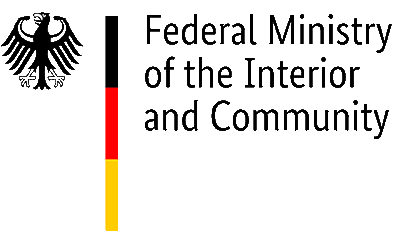An important set of rules for more protection against interpersonal violence in sport – with weaknesses
The German Olympic Sports Confederation (DOSB) published a Safe Sport Code on 23 October 2024. In doing so, the umbrella organisation of organised sport aims to create the legal basis for the first time to be able to punish and sanction interpersonal violence in sport with legal certainty, even below the threshold of criminal law.
Safe Sport e.V. welcomes the associated objective of strengthening a culture of recognising and acting to protect those affected with a set of rules to prevent and combat interpersonal violence in sport. The DOSB is thus implementing very specific recommendations for action that were derived from the results of empirical studies such as ‘Safe Sport’ (2016) and SicherImSport (2023).
Shortcomings in the process of developing the Safe Sport Code
However, there was no systematic involvement of stakeholders in the development of the DOSB Safe Sport Code. It was only towards the end, in a consultation phase scheduled at short notice, that Safe Sport e.V. and stakeholders were given the opportunity to provide their opinions on the largely finalised set of rules. The DOSB is thus undermining its own human rights policy. ‘A code that has been developed without the systematic participation of those affected does not reflect the needs and requirements of those who need this support most urgently,’ explains Gitta Schwarz, Chair of Safe Sport e.V..
In the development process, there was also no systematic link to the process of setting up the independent Centre for Safe Sport (ZfSS). The centre is being designed under the leadership of the Federal Ministry of the Interior and Home Affairs (BMI) as part of a comprehensive stakeholder process and is intended to play a central role in the independent intervention and processing of interpersonal violence in sport. With reference to the autonomy of sport, the DOSB has accelerated the development of its own Safe Sport Code this year in parallel to the stakeholder process initiated by the BMI.
Some of Safe Sport e.V.’s recommendations have been incorporated into the Safe Sport Code
During the consultation phase, Safe Sport e.V. highlighted deficits in the Safe Sport Code presented and made recommendations for amending or expanding the regulations. Those that have been integrated into the Safe Sport Code Sport include an explicit anchoring of the rights of those affected (Art. 13), which were not previously provided for, as well as statements on the objectives and the necessary independence of the investigation process (Art. 17). It was also included that the investigation procedure can be transferred to a body external to the association, such as the Safe Sport Centre (Art. 8). However, with a view to a statute of limitations that is fair to those affected, the fact that those affected often take years to muster the courage to tell their stories has not been adequately taken into account in the current version of the Safe Sport Code.
Gaps in the Safe Sport Code that should be urgently closed
In order to ensure that the overall Safe Sport process – protection from, assistance with and education about interpersonal violence in sport – is realised, Safe Sport e.V. believes that gaps need to be closed in the near future. These are a priority:
- Ensuring freedom of choice for those affected: Those affected must be able to decide freely in their individual case which body will record and process the interpersonal violence they have experienced or observed, without having to rely exclusively on internal sporting decisions and channels and being exposed to the risk of re-traumatisation.
- Specification of reporting obligations: In addition to the general option of transferring responsibilities to internal association bodies, standards should be drawn up in the Safe Sport Code as to when sports organisations must mandatorily transfer their responsibilities to external organisations – such as the Centre for Safe Sport (e.g. in the event of conflicts of interest, structural deficits).
Prof Ilse Hartmann-Tews, Chair of Safe Sport e.V., summarises: ‘The Safe Sport Code has the potential – despite the gaps that still exist – to strengthen the desired cultural change to combat interpersonal violence. It will only be fully effective in protecting those affected and strengthening the integrity of sports organisations in conjunction with the independent Centre for Safe Sport. We expect the DOSB and its member organisations to systematically seize this opportunity.’
Perspectives in the Safe Sport process
In order to ensure that independent intervention and processing for all sports organisations is evidence-based and legally compliant, binding standards must also be developed in a timely manner. In our opinion, this should be led by the Centre for Safe Sport and designed in cooperation with stakeholders from organised sport. An evaluation of the implementation and effectiveness of the Safe Sport Code should also be carried out by an external, independent organisation in which those affected are systematically involved, as are association managers and experts from academia.
Safe Sport e.V., whose board of directors with Prof Dr Ilse Hartmann-Tews and Gitta Schwarz was re-elected at the general meeting at the end of October, will continue to work intensively in the Safe Sport process to strengthen the rights of those affected in sport.
Press contact:
kontakt@ansprechstelle-safe-sport.de
+49 30 220138710

